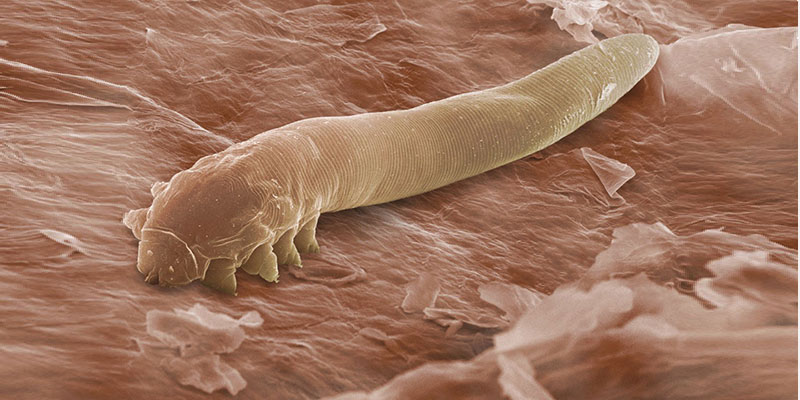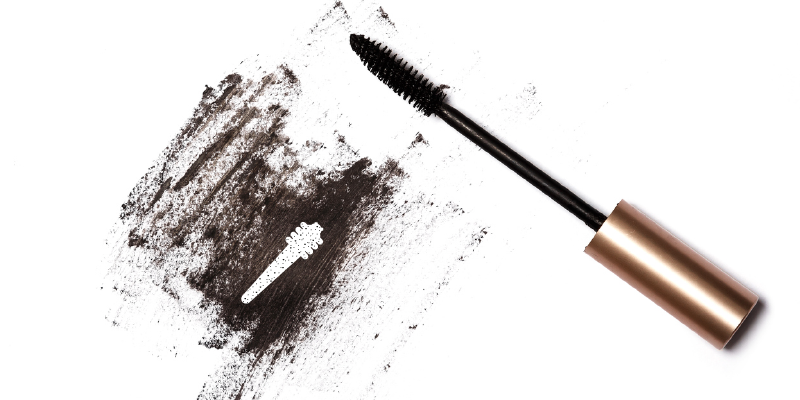Blepharitis is irritating. Literally irritating. It can be caused by a deluge of tiny arachnids (Demodex mites) that live on human faces, nesting inside of hair follicles, and feeding on people’s sebaceous oils.
That may sound terrifying and in some cases it is, but to most people those mites are harmless. However, if you happen to get enough Demodex mites living in your eyelashes, eating, procreating, and dying, chances are you will end up with blepharitis.
To learn more about easy, natural, and at-home methods for treating Demodex blepharitis, we turned to the same trusted sources that anyone out there might, if they found themselves with a blepharitis outbreak.
What Is Blepharitis?

According to the American Academy of Ophthalmology, blepharitis is a disorder of the eye in which the eyelids become red, inflamed, and itchy. They describe it as being caused by oil and dandruff build-up and driven by bacteria.
Increases in the intensity and frequency in which people suffer blepharitis are related to how much bacteria inflames the oil glands in the eyelids. When the oil glands become blocked the problems increase. Notice that they do not blame this on mites?
In fact, mites were not even mentioned. We found that odd, so we moved on.
The National Eye Institute, part of the National Institute of Health, seemed like a good next stop for information. After all, this is the US government’s repository for all health-related information. NEI’s approach to defining blepharitis is to identify it as a very common eye condition and one that can impact both the inside and the outside of the eyelid and cause discomfort to the entire eye area.
Their website notes that it can be very hard to treat because it is commonly recurring, but that the symptoms are fairly easy to manage. While mites were mentioned, there was no elaboration. We found this a bit odd and so moved on.
The Mayo Clinic describes in more extensive detail the symptoms, causes, diagnosis, and medical treatment protocols for blepharitis. It points out that a doctor may prescribe medications for infection, inflammation and to help the immune system. It relates the symptoms back to the underlying conditions that could be causing blepharitis.
This is where things get interesting. Mites are not listed as part of the potential cause of blepharitis on the Mayo Clinic’s website; however, they are listed as something to control when focusing on self-care and home remedies.
Without giving any details that would help a frustrated and agonized blepharitis sufferer understand how they are related, the suggestion is made to use tea tree oil on one’s eyelids to control for mites. This is in the same short section, by the way, that suggests a dandruff shampoo to reduce dandruff that may be contributing to the irritation.
What to Really Do About Demodex Blepharitis

Now we at Cliradex know a little something about blepharitis and a lot about the Demodex mites that are frequently implicated or associated with aggravating the condition. But we were very surprised that our website and blog are better resources for information about both the disease and the little parasites than those three high profile sources.
Demodex mites have a very short life cycle, living less than two weeks on average. They rely on the hair follicle and sebaceous glands at different stages. They mate on the hair follicle, crawl into the sebaceous gland and lay their eggs, which hatch there, and eventually, as they grow up they find their way back to the hair follicle as mature males and females to procreate. The mites die after laying their eggs and expel all of the waste in their bodies, which can clog up oil glands and pores and cause a bacterial infection.
There are only two types of Demodex mites that infest people, Demodex folliculorum and D. brevis. They both live on almost every human being on the planet and move from host to host through dust, skin to skin contact, pillows, and other surfaces. Studies have shown a positive correlation between aging patients and the mite loads and severity and frequency of blepharitis, indicating that the older you are, the more likely this is going to be a problem. (Source) Medications, both topical and oral, can be prescribed to kill mites. But since Demodex mites recur and are almost impossible to keep from spreading it is usually a better choice to go with a natural treatment alternative that can be self-administered without a prescription.
The tea tree oil that the Mayo Clinic indicated as a mite killer really does work. Cliradex has taken the natural 4-terpineol compound of tea tree oil and used it in a series of products that target Demodex mites, soothe the irritation associated with blepharitis, and is safe and gentle enough to use daily on your eyes, eyelids, and eyelashes. Cliradex towelettes not only kill the mites but breaks their life cycle and provides relief to irritated eyes. So you may not be able to completely escape mites (no one can) but you can get a reprieve when you need it most.





